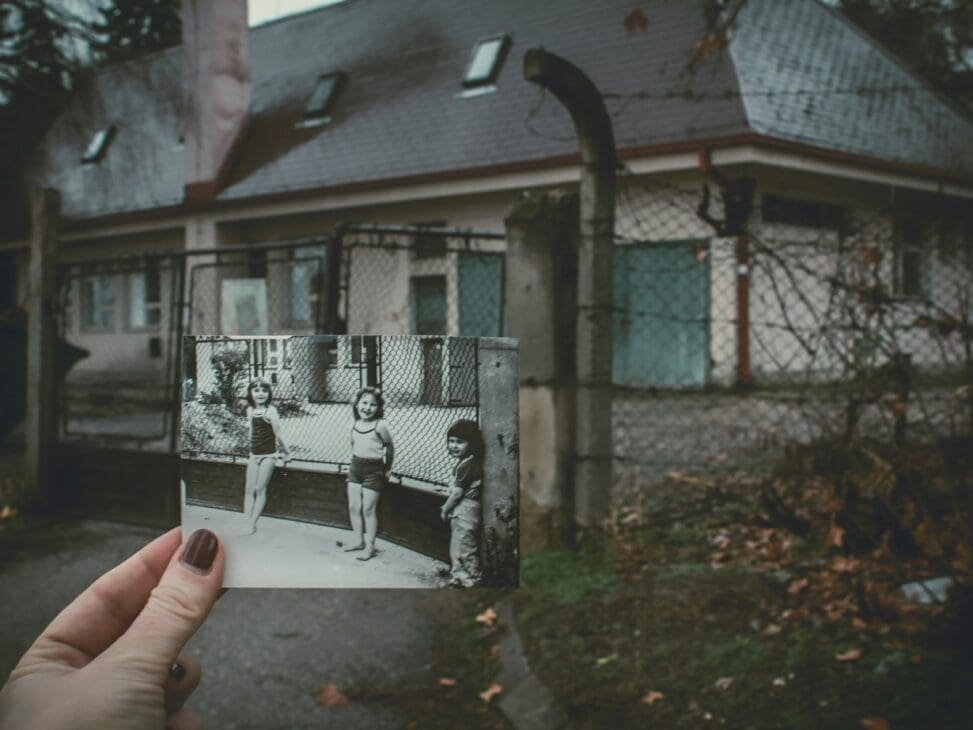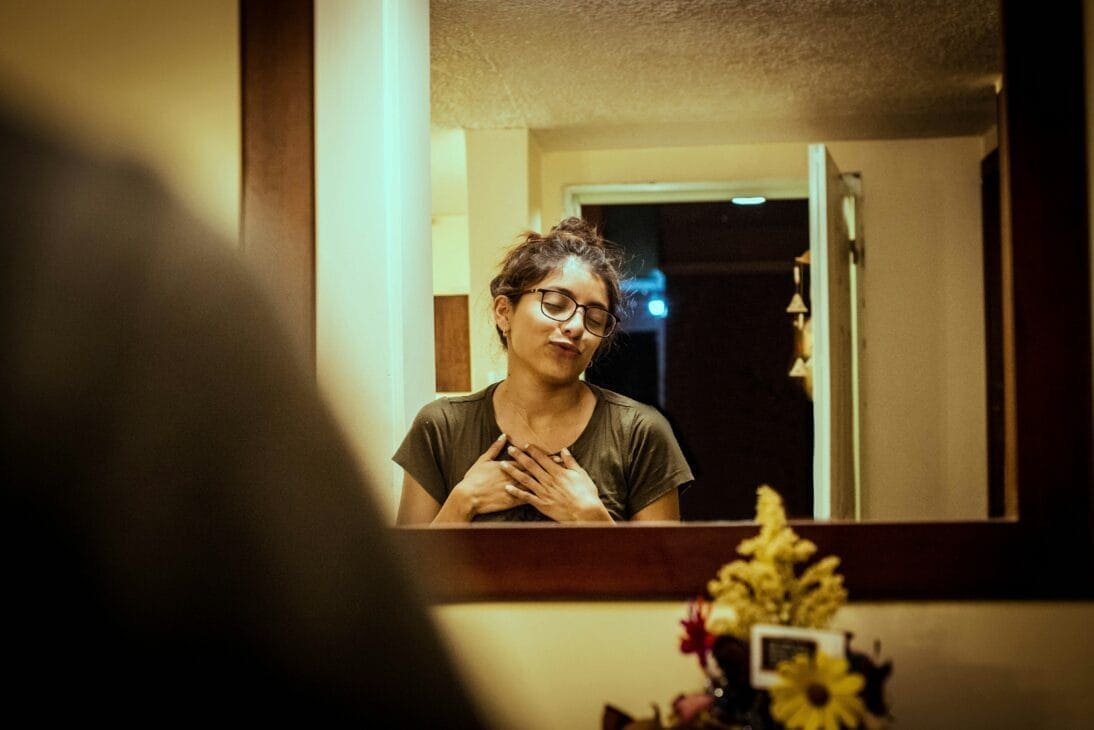Listening to My Inner Child: The Healing I Needed

Healing Doesn’t Always Look Like What We Expect
When people talk about healing, I used to imagine something dramatic—like a breakthrough moment of forgiveness, a massive transformation, or some kind of spiritual awakening that changes everything overnight. I thought healing had to be loud to be real.
But what if healing is quieter than that?
What if it doesn’t always look like a movie montage or a big life makeover?
What if it begins with a whisper—soft, subtle, and easy to miss?
That whisper often comes from within—the child version of ourselves still waiting to be heard.
I didn’t know I needed healing until life kept nudging me toward it in ways I couldn’t ignore. I was constantly anxious, second-guessing myself, and overthinking everything. I avoided conflict as if it were my full-time job. I’d react strongly to things that didn’t seem like a big deal on the surface—and I couldn’t figure out why.
I thought I just needed to “calm down” or “be less sensitive.”
But the truth was deeper than that.
Through therapy, journaling, and quiet moments of reflection, I began to do something I never knew I needed: inner work—the slow, intentional process of going within, listening to my emotions, and responding with love instead of judgment.
And that’s when I met her:
My younger self.
The little girl inside me who had been waiting all along.
She didn’t want perfection or answers.
She just wanted someone—me—to finally listen.
What Is Inner Work?

Inner work is more than just a buzzword—it’s the deeply personal journey of returning to yourself. It’s about peeling back the layers you’ve built over time—defense mechanisms, outdated beliefs, inherited behaviors—and asking, “Who am I beneath all of this?”
According to psychologist John Bowlby, inner work involves integrating our conscious and unconscious selves, helping us become aware of emotional patterns formed in childhood that still influence our adult lives.
At its core, inner work is the act of gently, consistently reconnecting with your most authentic self—the version of you that existed before fear, shame, or trauma told you how to behave to be accepted or safe.
It looks different for everyone. For some, it’s therapy. For others, it’s journaling, mindfulness, or shadow work. But no matter the path, the goal is the same: to become aware of your emotional patterns, face your wounds with compassion, and give yourself the care you may have once lacked.
Healing through inner work means making space for your inner child—the younger you who still remembers what it felt like to be ignored, misunderstood, belittled, or afraid. That version of you hasn’t disappeared. They live in your body, in your memories, and in the reactions you have today that sometimes don’t make logical sense.
Maybe you’ve found yourself overreacting to small conflicts, fearing rejection in secure relationships, or feeling shame just for asking for what you need. These aren’t flaws—they are emotional imprints from past experiences that your inner child is still carrying.
Why This Matters
Because many of our adult behaviors—especially the ones that confuse or frustrate us—aren’t truly rooted in the present moment. They’re echoes from our past, quietly influencing how we show up in the world.
Think about it:
- That panic when someone gets upset with you? It might stem from a time when anger meant punishment or abandonment.
- That urge to constantly prove yourself? It could be your younger self trying to earn love or attention that wasn’t freely given.
- That deep discomfort with rest or stillness? Maybe it’s the voice that once said you had to perform to be worthy.
These reactions often feel automatic, even irrational—but they made perfect sense when we were younger. They were survival tools. And now, inner work invites us to upgrade those tools with love and awareness, rather than shame.
It’s not about blaming the past or wallowing in old pain. It’s about creating space to understand yourself with honesty and tenderness. It’s about reparenting the child within you—giving them the affirmation, protection, and comfort they may have missed.
When you start doing inner work, healing begins in small, powerful ways:
- You pause before reacting and ask, “What am I really feeling?”
- You recognize your triggers not as weaknesses, but as invitations to heal.
- You respond to your needs with compassion, instead of criticism.
- You realize you are not broken—you are becoming whole.
And slowly, the patterns that once controlled you lose their grip. You stop living on autopilot. You begin choosing your responses instead of repeating them. You start building a relationship with yourself that feels safe, kind, and rooted in truth.
That is the quiet magic of inner work.
And that’s why it matters so deeply for healing.
Because no one else can do it for you.
And no one can take it away from you, once you begin.
How I Discovered My Inner Child Needed Healing

I used to think I had “moved on” from my childhood. I mean, it was in the past, right? I had grown up, gotten through it, and built a life that looked fine from the outside.
But slowly, certain patterns began to surface—ones I couldn’t ignore anymore.
- I panicked when someone raised their voice, even if it wasn’t directed at me.
- I felt completely worthless whenever I made a mistake.
- I struggled to say no, even when I was exhausted and needed rest.
At first, I thought these were just flaws in my personality—things I needed to “fix.” But over time, I began to see them for what they truly were: coping mechanisms my inner child had created to survive.
She learned to be extra careful, to people-please, to avoid conflict—because back then, those strategies kept her safe. She thought love had to be earned through perfection. She believed that making everyone else happy was the only way not to be abandoned or rejected.
These weren’t just random behaviors. They were protective patterns, built in childhood and carried into adulthood, still operating long after they were needed.
And when I finally slowed down enough to listen—really listen—to what she had to say, it broke me open in the best possible way.
It wasn’t about blaming the past. It was about understanding myself with compassion.
It was about seeing the little girl within me… and finally letting her be heard.
Recognizing these patterns was the first step toward learning how to reparent myself.
Signs Your Inner Child Is Asking for Attention
Have you ever caught yourself reacting strongly to something small and wondered, “Why did that bother me so much?” Or maybe you notice yourself falling into the same emotional patterns, even when you know better.
That might be your inner child trying to get your attention. Here are a few signs they might be crying out for healing:
- You fear abandonment or rejection—even in relationships that feel safe. A small disagreement can feel like the end of the world because it reminds you of times when love felt conditional.
- You constantly people-please, even at your own expense. Saying yes feels safer than disappointing someone, even if it means betraying your own needs. You apologize even when you’ve done nothing wrong.
- You feel unworthy of love unless you’re “perfect.” Mistakes aren’t just mistakes—they trigger deep shame and the fear that you’re not enough.
- You avoid conflict at all costs. Even healthy confrontation makes you freeze, panic, or shut down because it brings up memories of feeling unsafe or unheard.
- You have a loud inner critic that sounds oddly familiar. Maybe it echoes a parent, teacher, or caretaker from your past—the voice that once made you feel small.
If any of this feels too familiar, please know: you’re not broken.
You’re human.
And your inner child is likely still carrying pain they were never taught how to release.
The good news? You can meet that part of yourself now—with patience, love, and presence. Healing begins the moment you listen.
Gentle Ways I Started Healing My Inner Child
Healing doesn’t happen overnight. It’s not a one-time fix, a box you check off, or a finish line you rush to cross. Healing is a relationship—one you build slowly, with intention and care.
And like any relationship, it requires consistency, patience, and love. Some days it felt easy to connect with my inner child, like we were learning to trust each other again. Other days, I felt resistant, tired, or unsure of what to do next—and that was okay too.
What mattered most wasn’t doing it perfectly.
What mattered was showing up—again and again—with softness, curiosity, and the willingness to listen.
Here are a few gentle, realistic practices that began transforming my healing journey:
Writing Letters to My Younger Self
I’d start with: “Dear little me…” and just let the words flow. I told her things I wish someone had told me when I was seven, ten, or fifteen.
I said:
- “It wasn’t your fault.”
- “You were so brave.”
- “I’m proud of you.”
Letting those words come out on paper felt strange at first—but deeply freeing.
Looking at Old Photos with Compassion
Instead of cringing at childhood photos, I looked at them like I would look at a friend’s child. I imagined holding her, telling her she’s safe now. It softened something inside me.
Naming My Triggers—Then Reassuring Myself
When I’d get anxious after a mistake or disagreement, I’d pause and gently say:
“This feels big because it reminds me of something old.”
Then I’d add:
“But I’m not that little girl anymore. I can handle this.”
That reassurance is healing in motion—one small step at a time.
Inner Work Isn’t Just “Woo-Woo” — It’s Science, Too
We now know that early childhood experiences shape how our brains respond to stress and relationships. Research in neuroscience shows that the limbic system, which governs emotion and memory, can retain imprints from childhood that influence how we react as adults. Engaging in inner work—through reflection, mindfulness, or journaling—can help regulate these emotional responses and promote neural flexibility.
“I believe in the neuroplasticity of our brain and our body, too. We can reteach ourselves, minds, and bodies what safety is. Whether it’s through writing, breathing, or taking ourselves out to create that space, we need to know that it’s possible. And to strengthen such a belief, we need to back it up with emotion. This is why so many mantras work, or affirmations don’t work, because many of us just say words, yet our whole system doesn’t follow. We have to follow the thought with belief, and we need to know that it doesn’t happen overnight.”
— Dr. Nicole LePera
She emphasizes that healing happens when we learn to reparent ourselves—to give our inner child what they needed and never received.
This isn’t about blaming our parents or living in the past. It’s about breaking cycles, with love and clarity.
What I Gained from Doing the Inner Work
I won’t pretend healing is easy. Sometimes I cried. Other times, I felt silly or awkward. But the freedom that followed—the way I could breathe deeper, feel my shoulders relax, and meet myself with gentleness—was worth every tender moment.
Here’s what changed:
- I became more patient with myself.
- I stopped apologizing for having needs.
- I chose boundaries over burnout.
- I finally felt at home in my own skin.
Most importantly? I felt seen by me. And that changed everything.
That’s when I realized—healing wasn’t about change. It was about remembering.
If You’re Just Starting Inner Work, Here’s What I Want You to Know

Dear reader, if this feels new or overwhelming—I get it. I was scared to open those doors, too. But what’s waiting on the other side is not more pain. It’s your own love.
And your inner child? She’s not asking for perfection. Just presence.
Here’s how you can gently begin:
Start Small:
- Journal what you remember feeling often as a child.
- Try a guided inner child meditation (YouTube has great free ones).
- Say something kind to yourself every day—even if it feels awkward.
Speak to yourself as you would to a child: with warmth, patience, and curiosity.
FAQs
1. What is “inner child healing,” and why is it important?
Inner child healing is the process of reconnecting with and nurturing the part of yourself that holds unresolved childhood emotions. It’s important because unhealed wounds from childhood can influence your behavior, relationships, and emotional well-being in adulthood. Healing this part of yourself fosters self-compassion, emotional resilience, and healthier boundaries.
2. How can I tell if I’m avoiding inner work?
Signs you might be avoiding inner work include dismissing strong emotions, constantly keeping busy to avoid reflection, or repeating negative patterns without understanding why. If you notice resistance to self-reflection or discomfort when confronting your emotions, it may be your mind protecting you from painful—but necessary—healing.
3. Is inner child work effective without therapy?
Yes, you can practice inner child work independently through journaling, meditation, self-reflection, and guided exercises. Therapy can enhance the process by providing professional guidance and emotional safety, but gentle, consistent inner work on your own can also bring insight, healing, and emotional growth.
4. What’s the difference between reparenting and shadow work?
- Reparenting is nurturing and supporting your inner child by giving them the love, validation, and guidance they didn’t receive in childhood.
- Shadow work involves exploring hidden or rejected parts of yourself, including negative beliefs, impulses, or unresolved emotions. Both practices overlap but serve different purposes: reparenting heals and nurtures, while shadow work uncovers and integrates.
Healing Is a Lifelong Conversation
Healing through inner work isn’t a “one and done” task—it’s an ongoing relationship with yourself. It’s sitting with your fHealing through inner work isn’t a “one and done” task—it’s an ongoing relationship with yourself. It’s sitting with your feelings instead of pushing them away. It’s choosing curiosity over shame. And it’s learning to trust your voice, especially when it trembles.
You are worthy of peace. You are worthy of joy. You are worthy of being loved—just as you are.
And the first step? Listening.
Let’s Keep This Conversation Going
If this resonated with you, I’d love to know:
- Have you ever tried inner child work?
- What does healing mean to you right now?
Leave a comment or share this with a friend who might need it.
You’re not alone on this journey. Your healing journey matters.
And the child inside you? They’ve been waiting for you to come home.
Key Takeaways:
- Healing starts by listening to your inner child.
- Inner work involves emotional honesty, reflection, and self-compassion.
- Gentle practices like journaling and self-talk can shift deep patterns.
- You don’t have to be “fixed”—you just have to be present.
- Save this post as a gentle reminder to return to yourself.
Ready to start your healing?
Begin by writing a short letter to your younger self. Let it be messy, tender, and true. That’s where the magic begins.
Because sometimes, the healing we never knew we needed begins with listening.


